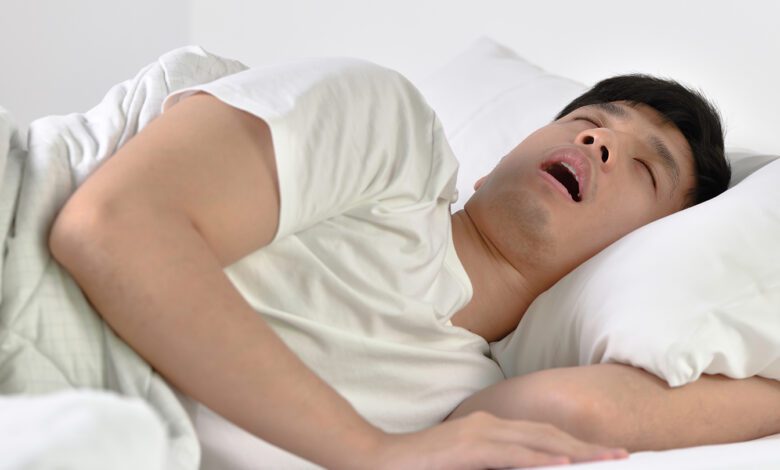
Obstructive sleep apnea (OSA), a disorder marked by constant, full airway collapse, affects more than 100 million Indians. The fragmented, nonrestorative sleep that occurs from this disturbance increases the risk of numerous other serious health problems, including mortality.
A study by the All India Institute of Medical Sciences (AIIMS) in New Delhi found that seven distinct studies from various sections of the nation were carried out over the previous 20 years.
The study’s findings, which were reported in the most recent edition of Sleep Medicine Reviews, showed that at least 11% of individuals have apnea, with men being more likely to develop it (13%) than women (5%).
The research’s principal investigator, Dr. Anant Mohan, professor and head of the pulmonology department at AIIMS, told the Times of India, “On extrapolating these results to India’s massive working-age population (15-64 years), we found that approximately 104 million Indians have OSA, and 47 million have moderate or severe OSA,”
The findings, according to Dr. Mohan, showed a sizable disease load that could have detrimental effects on the working population’s economic productivity and long-term health.
“There is an urgent need to increase awareness about sleep disorders, among the public. Similar to other lifestyle disorders like heart disease and diabetes, we also require public health measures, and policy formulations for tackling OSA at a large scale in our population,” he stated.
What causes OSA?
According to medical professionals, OSA happens when the muscles that support the soft tissues in your throat, such the tongue, start to relax. As a result, your airway narrows or even closes, temporarily preventing breathing.
In a typical condition, air should always flow easily from the mouth and nose into the lungs, even while sleeping.
However, people with apnea experience frequent instances of full stoppage of breathing, known as apneic episodes. In OSA, the usual airflow is sometimes interrupted throughout the course of the night.
Risk factors
OSA is very prevalent in elderly males, however it can also affect kids. Following menopause in women, the incidence increases.
People who have the following illnesses or conditions are more likely to develop OSA, including:
- Obese or severely overweight individuals
- Those who experience endocrine disorders including polycystic ovary syndrome or hypothyroidism
- Those who suffer from a long-term lung condition like asthma
- Those who have experienced a stroke
- Pregnant females
The following highly dangerous health problems can result from untreated OSA:
- Hypertension or high blood pressure
- Stroke
- Diabetes
- irregular heartbeat
- Thoracic hypertension
- Death
According to experts, a good diagnosis and course of therapy are crucial for avoiding problems.
Signs and symptoms
Most OSA patients complain their daytime tiredness. Poor-quality sleep is a result of OSA, which creates episodes in which the brain and other body regions receive less oxygen. This results in daytime sleepiness and morning confusion.
Individuals who share beds with OSA patients may report the following symptoms:
- Noisy snoring
- Gasping
- Choking
- Snorting
- Breathing pauses when slumbering
These symptoms are frequently found during routine health maintenance exams or when investigating another ailment.
The following signs and symptoms are also possible in people with OSA:
- Early-morning headaches
- Being unhappy or irritated
- Forgetfulness
- Drowsiness
- Awakenings that occur repeatedly throughout the night
Other signs comprise:
- Children that are hyperactive
- Depression getting worse
- Ineffective at work and in school
- A decline in sex motivation
Treatment
Your doctor might just advise lifestyle modifications, such as to stop smoking or losing weight, for milder forms of sleep apnea. You might need to alter your sleeping position. Your doctor might suggest allergy medication if you suffer from nasal allergies.
However, doctors advise placing people with moderate to severe sleep apnea on cpap or bipap. Continuous positive airway pressure is referred to as CPAP.
To keep the upper airway open, it releases compressed air through a hose that is attached to the nasal mask. Bi-PAP stands for bilevel or two-level positive airway pressure, applied to the patient both during inhalation and expiration. Additionally, certain individuals could need surgery.
You might also be interested in – Breathless 2-year old saved by AIIMS doctors on-air



